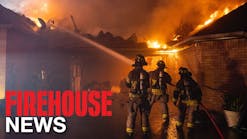N.M. Dispatch Center Launches Smart911 Program
Source The Daily Times, Farmington, N.M.
Jan. 30--FARMINGTON -- The emergency dispatch center launched a potentially life-saving program Tuesday that allows residents to provide emergency responders with information that can be used during emergencies.
The program is called Smart911. San Juan County residents can go online and log family information and pictures into a database which police, firefighters and other emergency responders can access if the person calls 911.
Emergency medical services could access family and medical histories while en route to a home. A police officer could see a picture of a child if she goes missing. Firefighters could learn how many people and pets are in a burning home and where they might be in that home before arriving on scene, said David Ripley, the director of The San Juan County Communications Authority.
"It's a major leap forward in public safety," he said.
The communication authority purchased the program with money that was collected through a gross receipts tax that funds emergency medical services and emergency dispatch.
Voters approved creation of the tax in 2003 and there is an election in March where voters will decide if the tax can continue indefinitely.
There is $45,000 annual fee to use the program and there was a $4,000 fee to set it up at the dispatch center.
Anyone in the county can go to www.smart911.com and create a home profile.
Ripley said the program doesn't invade its users' privacy.
"It's
very secure," he said. "The information is only available if you call 911 and it's only available for 45 minutes."
The program asks for information about people and pets in a home, bedroom locations, medical information and the layout of the home, including how to turn gas and electricity on and off.
David Burke, a battalion chief with the Farmington Fire Department, said the program may help firefighters in any type of emergency, medical or fire.
In a medical emergency, having a person's medical history can help paramedics start treatment quicker and more efficiently, he said.
The information could also prove useful during a fire.
"The first engine on scene looks for power, gas and other hazards," Burke said. "If that's identified earlier, that's a couple seconds that can be critical."
Copyright 2013 - The Daily Times, Farmington, N.M.





